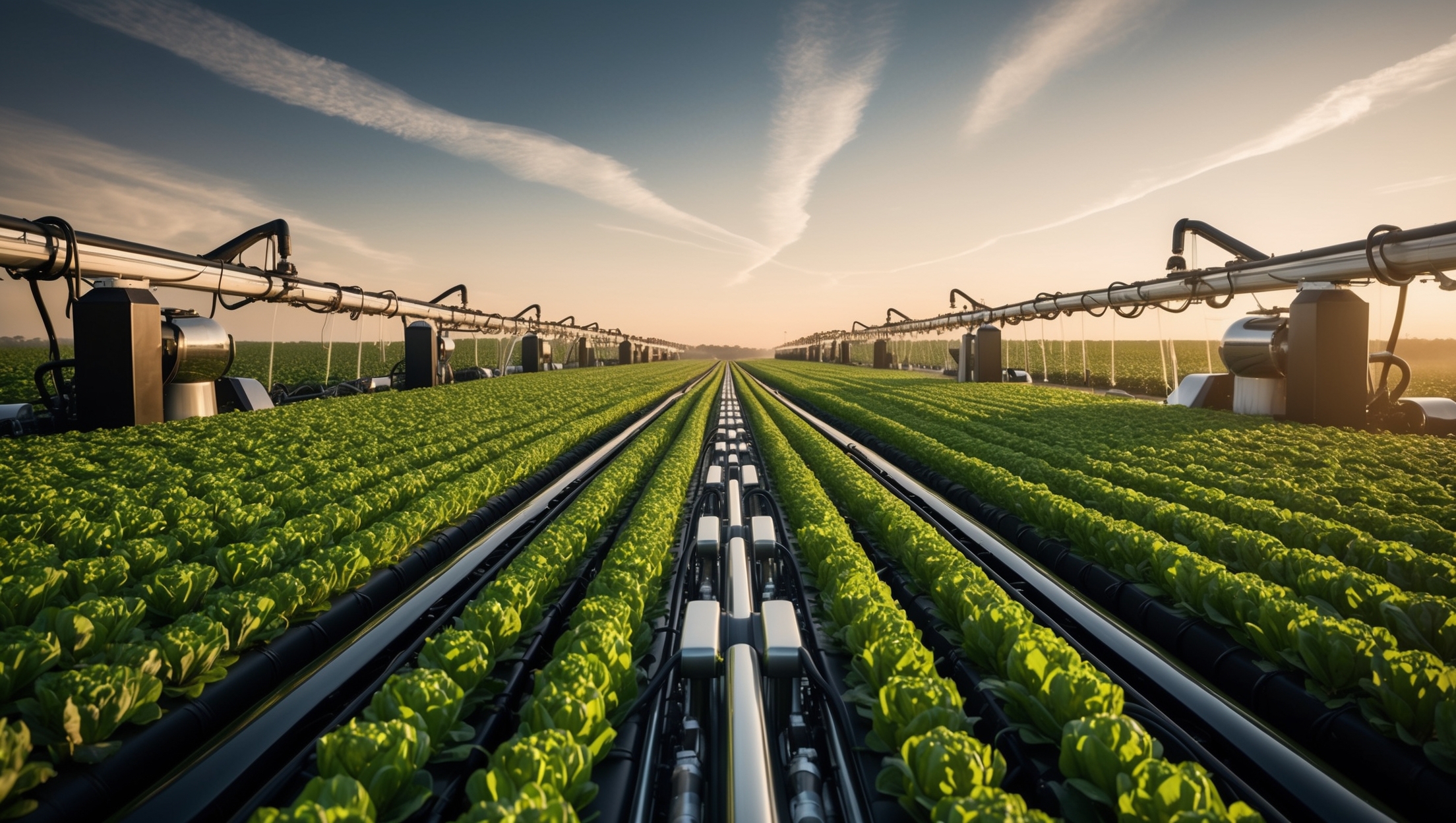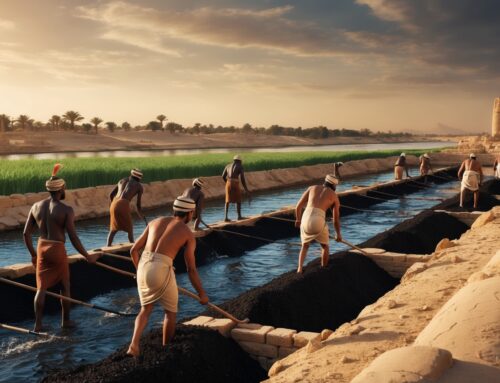For effective irrigation management, understanding soil moisture is crucial. While most farmers are familiar with basic soil moisture metrics like field capacity and wilting point, there are more advanced metrics that can provide deeper insights into soil health and crop needs. In this post, we’ll explore some advanced soil moisture metrics, including Volumetric Water Content (VWC), Soil Water Potential, Soil Moisture Deficit, and Water Holding Capacity. By understanding these metrics, you can gain better control over your irrigation practices, optimize water use, and improve overall crop productivity.
Volumetric Water Content (VWC) vs. Soil Water Potential
Two of the most common advanced metrics for measuring soil moisture are Volumetric Water Content (VWC) and Soil Water Potential. Although both metrics help assess soil moisture, they provide different types of information.
Volumetric Water Content (VWC)
Volumetric Water Content represents the percentage of soil that is occupied by water. It’s essentially a measure of the quantity of water present in the soil, expressed as a volume fraction. For example, if the VWC is 30%, it means that 30% of the soil’s volume is made up of water. VWC is particularly useful for determining the total amount of water available in the soil for crops.
VWC can be measured using sensors like Terrestream’s Irrigauge, which uses capacitance or frequency domain technology to detect changes in the dielectric constant of the soil. This gives a quick and reliable estimate of the moisture content, making it easy for farmers to monitor the water levels in their fields in real-time.
However, VWC alone doesn’t tell the complete story. While it provides a direct measurement of how much water is present, it doesn’t indicate how easily plants can extract that water. This is where Soil Water Potential becomes important.
Soil Water Potential
Soil Water Potential is a measure of the energy required for plants to extract water from the soil. It is usually expressed in units of pressure (such as kilopascals, kPa). The lower the soil water potential (more negative), the harder it is for plants to access the water.
Soil water potential is influenced by factors like soil type, compaction, and salinity. For instance, in clay soils, water might be present in significant amounts, but it could be held so tightly that plants struggle to use it. On the other hand, in sandy soils, water might be more easily available but drains away quickly, requiring more frequent irrigation.
By using both VWC and soil water potential together, farmers can get a more complete picture of their soil moisture status. VWC tells you how much water is present, while soil water potential tells you how accessible that water is to plants. Understanding both metrics can help you decide not only when to irrigate but also how much water to apply.
Soil Moisture Deficit: Calculating Irrigation Needs
Another important concept in advanced soil moisture management is Soil Moisture Deficit. Soil moisture deficit refers to the amount of water needed to bring the soil moisture level back to field capacity. Essentially, it’s a measure of how much water is missing from the soil to reach the ideal moisture level for plant growth.
Calculating the soil moisture deficit helps farmers determine precise irrigation needs, preventing overwatering and underwatering. For example, if your field has a soil moisture deficit of 20 mm, it means that 20 mm of irrigation water is needed to bring the soil back to field capacity. By knowing this value, you can avoid the guesswork and apply just the right amount of water, improving water use efficiency and reducing waste.
Soil moisture deficit is especially useful when combined with weather data. If rainfall is expected, you can adjust your irrigation schedule to avoid overwatering. Tools like Terrestream’s FieldHub can help integrate soil moisture data with local weather forecasts, allowing for a more dynamic and responsive irrigation strategy.
Water Holding Capacity Across Soil Types
Water holding capacity refers to the total amount of water that a soil can retain, which depends largely on its texture and structure. Different soil types have different water holding capacities, and understanding these differences is key to effective irrigation management.
- Sandy Soils: Sandy soils have large particles and pore spaces, which means they drain quickly and have a low water holding capacity. While this means that sandy soils dry out quickly, it also means they are less prone to waterlogging. Farmers with sandy soils need to irrigate more frequently but in smaller amounts to keep moisture levels steady.
- Clay Soils: Clay soils, on the other hand, have small particles and can hold a large amount of water. However, they also tend to retain water very tightly, which can make it difficult for plants to extract the moisture they need. Clay soils are prone to becoming waterlogged if over-irrigated, so it’s important to monitor soil water potential to avoid stressing crops.
- Loam Soils: Loam soils are considered ideal for farming because they are a balanced mixture of sand, silt, and clay. They have a good water holding capacity while also providing good drainage. Loam soils can hold sufficient water for plants, making irrigation management easier compared to sandy or clay soils.
Understanding the water holding capacity of your soil helps you determine how much water to apply and how often to irrigate. By using sensors like the Irrigauge, farmers can get real-time data on how much water their soil is holding and adjust their irrigation practices accordingly.
Practical Application: Combining Metrics for Better Irrigation Decisions
To truly optimize irrigation, farmers should use a combination of these advanced soil moisture metrics—VWC, soil water potential, soil moisture deficit, and water holding capacity.
For example, let’s say you have a field with clay soil. Your VWC readings might indicate that there is plenty of water in the soil, but the soil water potential could show that the water is held too tightly for the plants to use effectively. In this case, you might need to adjust your irrigation practices to avoid overwatering, which could further compact the soil and make water even less available to plants.
Alternatively, if you are managing a sandy field, you might see that the soil moisture deficit is often high, indicating that frequent irrigation is needed to keep moisture levels within the ideal range. By understanding the water holding capacity of your soil, you can fine-tune your irrigation schedule to apply smaller amounts of water more frequently, preventing the soil from drying out.
Historical Perspective: Learning from Past Mistakes
The Dust Bowl of the 1930s is a powerful example of what can happen when soil moisture is not properly managed. Farmers in the Great Plains, facing a combination of drought and poor soil management practices, saw their topsoil blow away, leaving their fields barren. Part of the problem was a lack of understanding of soil moisture and the importance of maintaining a balance between soil water content and soil structure.
Today, we have advanced tools and metrics that can help us avoid repeating those mistakes. By understanding soil moisture at a deeper level, we can make better decisions that protect both our crops and the long-term health of our soil.
Conclusion: The Power of Advanced Metrics
Advanced soil moisture metrics like Volumetric Water Content, Soil Water Potential, Soil Moisture Deficit, and Water Holding Capacity provide a more complete understanding of soil moisture dynamics. By using these metrics together, farmers can make more informed irrigation decisions, optimize water use, and improve crop productivity.
The key to effective irrigation is not just knowing how much water is in the soil, but also understanding how easily plants can access that water and how much water is needed to reach ideal moisture levels. By leveraging the power of advanced soil moisture metrics and using tools like Terrestream’s Irrigauge, FieldLink, and FieldHub, you can take your irrigation management to the next level and ensure the long-term health and productivity of your fields.





